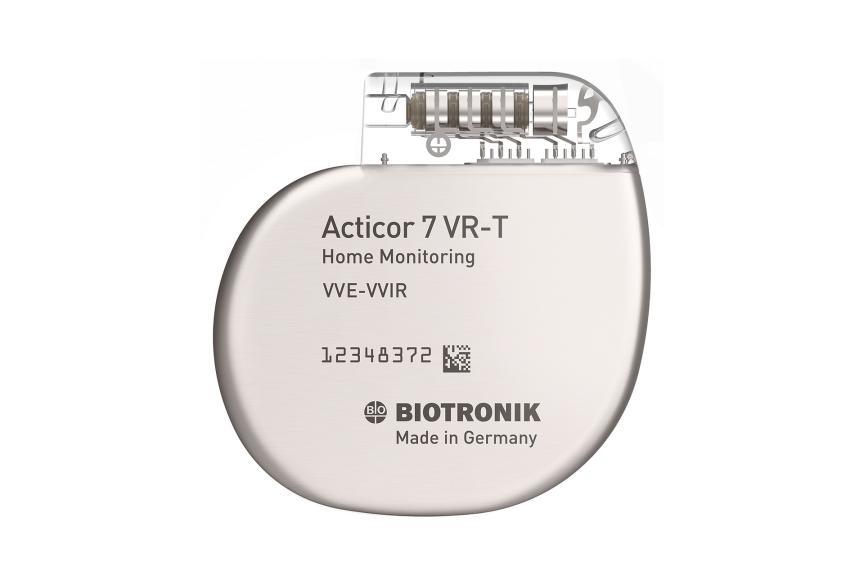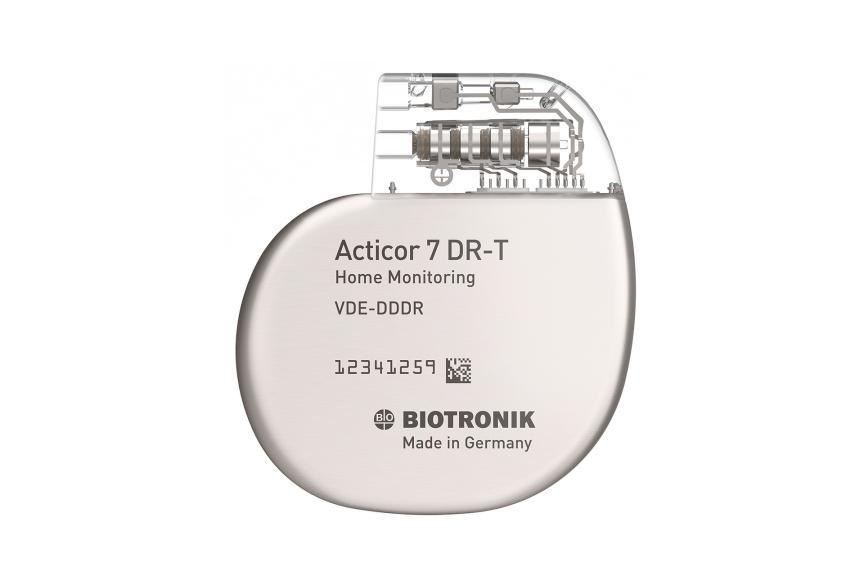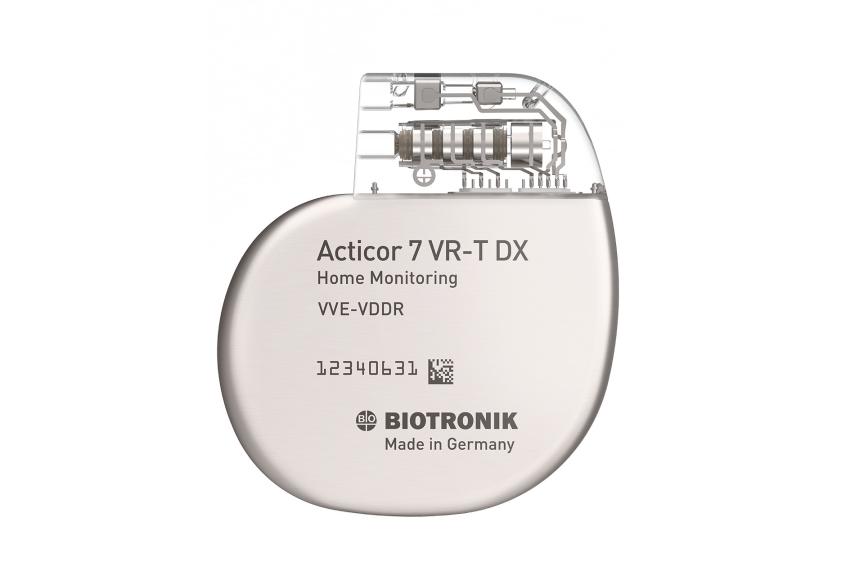Acticor 7 VR-T / DR-T
Contact Us
References
1. Single-Chamber ICD Standard conditions, Acticor 7 VR-T, RV: 2.5 V/0.4 ms, 40 bpm, 500 Ω; RV: 15 % pacing; 2 max. energy shocks/year; Home Monitoring: ON (daily transmission); diagnostics: ON. Technical manual, May 2023.; 2. Varma N et al. Efficacy and Safety of Automatic Remote Monitoring for Implantable Cardioverter-Defibrillator Follow-Up: The Lumos-T Safely Reduces Routine Office Device Follow-Up (TRUST) Trial. Circulation, 2010;122: 325 – 332.; 3. Guedon-Moreau L et al. Decreased delivery of inappropriate shocks achieved by remote monitoring of ICD: a substudy of the ECOST trial. J Cardiovasc Electrophysiol, 25 (2014), 763-770.; 4. Contoured housing; Acticor/Rivacor VR: 60x61.5x10 mm; 30 ccm.; 5. As part of an MR conditional system.; 6. Post-Market observation; Final report, March, 2019. Data on file.; 7. Device shape analysis, February 2019. Data on file.; 8. Post-Market observation; Interim-analysis, December 21, 2018. Data on file.; 9. Acticor 7 VR-T @ 60 ppm, 15% pacing, 2.5V, 500 Ohms: Medtronic 3T Full-body MRI; VISIA AF (EVERA; MIRRO) MRI S VR SureScan: 10.7 years (MDT IFU) vs Acticor 7 VR-T ProMRI: 14.9 years. Competitor device manuals as of Nov. 2018.; 10. Polyzos KA, Konstantelias AA, Falagas ME, Risk factors for cardiac implantable electronic device infection: A systematic review and meta-analysis, Europace (2015) 17, 767-777.; 11. In patients without a history of atrial arrhythmias at implant.; 12. Biffi M, Iori M, De Maria E, et al. The role of atrial sensing for new-onset atrial arrhythmias diagnosis and management in single-chamber implantable cardioverter-defibrillator recipients: Results from the THINGS registry. Journal of Cardiovascular Electrophysiology, Volume 31, Issue 4, April 2020, Pages 846–853.; 13. Pung X, Hong DZ, Ho TY, et al. The utilization of atrial sensing dipole in single lead implantable cardioverter defibrillator for detection of new-onset atrial high-rate episodes or subclinical atrial fibrillation: A systematic review and meta-analysis. Journal of Arrhythmia. Volume 38, Issue 2, 15 January 2022, Pages 177–186.; 14. Thomas G, Choi DY, Doppalapudi H, et al. Subclinical atrial fibrillation detection with a floating atrial sensing dipole in single lead implantable cardioverter-defibrillator systems: Results of the SENSE trial. Journal of Cardiovascular Electrophysiology, Volume 30, Issue 10, October 2019, Pages 1994–2001.; 15. Hindricks G, Theuns DA, Bar-Lev D, et al. Ability to remotely monitor atrial high-rate episodes using a single-chamber implantable cardioverter-defibrillator with a floating atrial sensing dipole, EP Europace, Volume 25, Issue 5, May 2023, Pages 1-10, euad061.; 16. Fact file: Cardiac Imaging with MRI, CT and Nuclear Techniques British Heart Foundation. January 2010.; 17. When patients are monitored by BIOTRONIK Home Monitoring. See ProMRI manual for all details.; 18. Schwab JO et al. Clinical Course of Dual-Chamber Implantable Cardioverter-Defibrillator Recipients followed by Cardiac Remote Monitoring: Insights from the LION Registry. BioMed Research International, 2018, https://doi.org/10.1155/2018/3120480.; 19. Ricci R P et al. Long-term patient acceptance of and satisfaction with implanted device remote monitoring. Europace (2010) 12, 674-679.; 20. Hindricks G et al. Implant-based multiparameter telemonitoring of patients with heart failure (IN-TIME): a randomised controlled trial. The Lancet. 2014; 384 (9943): 583–590.; 21. Crossley G H et al. The CONNEXT (Clinical Evaluation of Remote Notification to Reduce Time to Clinical Decision) Trial. JACC. 2011; 57(10):1181-1189 [for bar chart comparison only].





